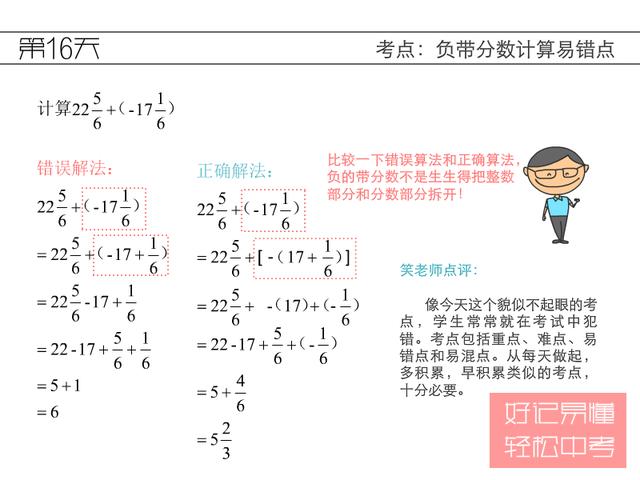Unit 8 同步讲解 ,我来为大家科普一下关于七年级下册英语学霸笔记第一单元?以下内容希望对你有帮助!

七年级下册英语学霸笔记第一单元
Unit 8 同步讲解
Step1考点知识梳理
Section A
I. there be 句型: 表示存在,意为“有”。即“某处有某物”。 结构:
there is /are 名词 介词短语(表示地点)/ 地点副词。
There is a pen and three books on the desk. 书桌上有一支钢笔和三本书。
1. 否定形式:在be动词后面加not
There is not a post office near here. 这儿附近没有邮局。
2. 一般疑问句形式:将be动词移到there前:
---Are there two balls in the bag? 包里有两个球吗?
---Yes, there are. (肯定回答)/ No, there aren't.(否定回答)
3. 对句子中的数字进行提问。
There are six pencils in the pencil box. (对画线部分提问)
How many pencils are there in the pencil box?
Ⅱ. Where's ... ? =Where is ... ? 该句型用来询问某人或某物在哪里。回答时可以直接用It's 介词短语(表示地点)/ 地点副词意思。例如:
--- Where is your new skirt? 你的新裙子在哪里?
--- It's on the bed, I think. 我想它在床上。
Ⅲ. next to 意为“接近;在……旁边,挨着的”。 这是一个介词短语,相当于beside,其后常接表示场所、顺序、价值的名词。例如:
1. My desk is next to Kate's. 我的桌在在凯特的临近。
2. Which is the town next to London in size?哪座城市在面积上仅次于伦敦?
Ⅳ. across 作介词,表示“横过”的意思。
1. a bridge across the river. 一座横跨河上的桥。
2. We swam across the river. 我们游到河对岸。
Ⅴ. in front of是 “在……前面;当……面”的意思。例如:
1. He is standing in front of me. 他正站在我的面前。
2. There is a tall tree in front of my house. 我家房前有一个课树。
Ⅵ. between 介词,表示“在……之间”的意思。例如:
8. It's a secret between you and me. 这是你我之间的秘密。
9. There is a railway between the two cities. 两城市之间有一条铁路。
Section B
I. quiet 形容词,表示“静止的,宁静的,轻轻的;不出声的”的意思。
1. Keep quiet! 保持安静!
2. Children are now very quiet. 孩子们现在很安静。
3. Jack does everything in his quiet way. 杰克做事总是一声不响的。
Ⅱ. take a walk 散步 ,同义词:go for a walk。
I want to take a walk along the river bank.
Ⅲ. with 介词
1. 表示伴随状态
I come into the classroom with a book in hand. 我拿着一本书进了教室。
2. 表示“具有”
There is a house with an interesting garden. 一个含有有趣的花园的房子。
China is a country with long history.
Ⅳ. play the guitar 弹吉他
play 在这里表示弹奏一种乐器。比如:play the piano; play the violin
Ⅴ. Arrive 不及物动词,表示“到达,来到”的意思,如果后面要接地点名词的话,其后面要接介词in(大地点)或者at(小地点)
1. Good weather has arrived at last. 好天气终于来到了。
2. They will arrive in New York at noon.他们将于中午到达纽约。
3. I just arrived at school.
Step2重点难点解析
难点一、There be 句型需要注意的几点:
1. There be句型表示的是“有”的意思,翻译是不需要“这”
There is a book on the table. 有一本书在桌子上。
不能翻译成:这有一本书在桌子上。
2. 句型中的be动词应用:
is:主语是可数名词单数或者不可数名词时
are:主语是可数名词复数时
There is a pen on the desk. 有一支钢笔在桌上。
There is some bread on the table. 有一些面包在桌上。
There are two children in the room.
★ 主谓一致:
如果there be 句型后的主语是几个并列的名词时,则根据离谓语be最近的动词的数确定be的形式,即该名词时单数,be用is;如果该名词是复数,be用are:
There is a bird and two boys in the tree. 树上有一只鸟和一个男孩。
There are some apples and a bird in the tree.
3. 与have(has)的区别
两者都有“有”的意思,但there be 句型强调“某处有某物/某人”,着重“存在”的状态;have 强调“某人有某物”,着重“所有、拥有”
There are three children in my family. 我家有三个孩子。
I have three children. 我有三个孩子。
★ 注意:正因为两者之间的这种区别,There be 句型中不能出现have或者has
难点二、表示方位的介词或者介词短语
1. at 在……地点
He stands at the end of the line. 他站在最后一排的最后。
Let's meet at the school gate.
2. in 在……里面,在……(大地点)
We will have a meeting in the classroom. 我们将在教室开会。
There are many Chinese restaurant in New York.
3. on 在……上面
Put the books on the shelf. 把书放在书架上。
My brother works on the farm.
4. between 在……之间
The little girl is sitting between her parents. 这个小女孩做在她父母的中间。
The village lies between two mountains. 这个村子位于两座山之间。
The post office is between the bank and the book store.
5. behind 在……后面
I stand behind her in line. 我排在她的后面。
She walks behind me. 她在我后面走。
6. in front of ... 在……的前面,前部(空间范围外)
There is a park in front of the house. 这所房子前面有个公园。
in the front of ... 在……的前面(空间范围内)
There is a post office in the front of the building. 这座建筑物的前面是个邮局。
★ 对比:There is a table in the front of the classroom.
There is a tree in front of the classroom.
7. across from...在……对面
The school is across from my house. 学校在我家的对面。
8. next to 在……隔壁
The building next to the post office is the bank. 邮局旁边的建筑物是银行。
难点三、play the guitar
play 作“演奏某一乐器”时,乐器前面需要定冠词the; 而作“参加(比赛或体育活动)”时,不用定冠词,如:play football,play tennis, play chess等等。
难点四、arrive, get , reach 辨析:
1. arrive in 大地点, arrive at 小地点,如:
We arrived at the village at five in the afternoon. 我们下午五点到达那个小村庄。
When did you arrive in Beijing? 你们是何时到北京的啊?
A. get to 地点名词:
How do you usually get to school? 你通常怎么到学校?
B. reach 是及物动词,后边直接跟地点名词。
When she reached the office, the teacher was having a short rest. 当她到达办公室时,老师正在休息。
,




